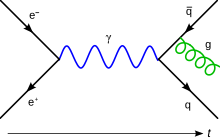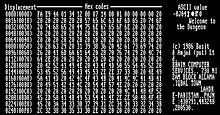This article's factual accuracy is disputed. (January 2025) |
This article lists inventions and discoveries made by scientists with Pakistani nationality within Pakistan and outside the country, as well as those made in the territorial area of what is now Pakistan prior to the independence of Pakistan in 1947.
Bronze Age
[edit]Indus Valley civilisation
[edit]
- Button, ornamental: Buttons—made from seashell—were used in the Indus Valley civilization for ornamental purposes by 2000 BCE.[1] Some buttons were carved into geometric shapes and had holes pieced into them so that they could attached to clothing by using a thread.[1] Ian McNeil (1990) holds that: "The button, in fact, was originally used more as an ornament than as a fastening, the earliest known being found at Mohenjo-daro in the Indus Valley. It is made of a curved shell and about 5000 years old."[2]
- Plough, animal-drawn: The earliest archeological evidence of an animal-drawn plough dates back to 2500 BCE in the Indus Valley Civilization in Pakistan.[3]
- Bow Drill: Bow drills were used in Mehrgarh between the 4th and 5th millennium BC.[4] This bow drill—used to drill holes into lapis lazuli and carnelian—was made of green jasper.[4] Similar drills were found in other parts of the Indus Valley civilisation and Iran one millennium later.[4]

- Public Baths: The earliest public baths are found in the ruins in of the Indus Valley civilisation. According to John Keay, the "Great Bath" of Mohenjo Daro in present-day Pakistan was the size of 'a modest municipal swimming pool', complete with stairs leading down to the water at each one of its ends.[5]
- Grid Plan: By 2600 BC, Mohenjo-daro and Harappa, and other major cities of the Indus Valley civilisation, were built with blocks divided by a grid of straight streets, running north–south and east–west. Each block was subdivided by small lanes.[6]
- Gemstones and Lapis Lazuli – Lapis lazuli artifacts, dated to 7570 BCE, have been found at Bhirrana, which is the oldest site of Indus Valley civilisation.[7]
- Flush Toilet: Mohenjo-Daro circa 2800 BC is cited as having some of the most advanced, with toilets built into outer walls of homes. These toilets were Western-style, albeit a primitive form, with vertical chutes, via which waste was disposed of into cesspits or street drains.[8][9]
- Drainage System: The Indus Valley civilisation had advanced sewerage and drainage systems. All houses in the major cities of Harappa and Mohenjo-daro had access to water and drainage facilities. Waste water was directed to covered gravity sewers, which lined the major streets.[10]
- Tanning (leather):Tanning was being carried out by the inhabitants of Mehrgarh in Pakistan between 7000 and 3300 BCE.[11]
Ancient Age
[edit]
- Formal grammar: In his treatise Astadhyayi, Panini gives formal production rules and definitions to describe the formal grammar of Sanskrit.[12]
- Morphological analysis: Panini, who lived during 5th century BCE in Gandhara developed methods of morphological analysis. Pāṇini's theory of morphological analysis was more advanced than any equivalent Western theory before the 20th century.[13]
Medieval Age
[edit]- Windpumps: Windpumps were used to pump water since at least the 9th century in what are now Pakistan and Iran, making its one of the earliest mentioned use.[14]
Post-independence
[edit]Chemistry
[edit]- Development of the world's first workable plastic magnet at room temperature by organic chemist and polymer scientist Naveed Zaidi.[15][16][17]
Physics
[edit]
- Discovery of electroweak interaction by Abdus Salam, along with two Americans Sheldon Glashow and Steven Weinberg. The discovery led them to receive the Nobel Prize in Physics.[18]
- Abdus Salam who along with Steven Weinberg independently predicted the existence of a subatomic particle now called the Higgs boson, Named after a British physicist who theorized that it endowed other particles with mass.[19]
- The development of the Standard Model of particle physics by Sheldon Glashow's discovery in 1960 of a way to combine the electromagnetic and weak interactions.[20] In 1967 Steven Weinberg[21] and Abdus Salam[22] incorporated the Higgs mechanism[23][24][25] into Glashow's electroweak theory, giving it its modern form.
Nuclear energy
[edit]- Sultan Bashiruddin Mahmood a Pakistani nuclear engineer developed a device to detect heavy water leaks in nuclear steam cylinders while working at Knapp nuclear power reactor near Karachi in 1972.[26] The device is patent in his name under his initials SBM probe and is widely used in nuclear power plants to date.[27]
Medicine
[edit]
- The Ommaya reservoir - a system for the delivery of drugs (e.g. chemotherapy) into the cerebrospinal fluid for treatment of patients with brain tumours - was developed by Ayub K. Ommaya, a Pakistani neurosurgeon.[28]
- A non-invasive technology for monitoring intracranial pressure (ICP) - developed by Faisal Kashif.[29]
Computing
[edit]
- A boot sector computer virus dubbed (c)Brain, one of the first computer viruses in history,[30] was created in 1986 by the Farooq Alvi Brothers in Lahore, Pakistan, reportedly to deter unauthorized copying of the software they had written.[31][32]
- Neurochip by Pakistani-Canadian inventor Naweed Syed.
Music
[edit]- The Sagar veena, a string instrument designed for use in classical music, was developed entirely in Pakistan over the last 40 years at the Sanjannagar Institute in Lahore by Raza Kazim.[33][34]
Economics
[edit]- The Human Development Index was devised by Pakistani economist Mahbub ul Haq in 1990 and had the explicit purpose "to shift the focus of development economics from national income accounting to people centered policies".[35][36]
See also
[edit]- Category:Pakistani inventors
- Science and technology in Pakistan
- List of inventions and discoveries of the Indus Valley Civilization, of the Bronze Age culture that flourished from 3300 to 1300 BCE in what is now Pakistan and India
- List of Indian inventions and discoveries, covers inventions made in the Indian subcontinent
References
[edit]- ^ a b Hesse, Rayner W. & Hesse (Jr.), Rayner W. (2007). Jewelrymaking Through History: An Encyclopedia. Greenwood Publishing Group. 35. ISBN 0-313-33507-9.
- ^ McNeil, Ian (1990). An encyclopaedia of the history of technology. Taylor & Francis. 852. ISBN 0-415-01306-2.
- ^ Lal, R. (August 2001). "Thematic evolution of ISTRO: transition in scientific issues and research focus from 1955 to 2000". Soil and Tillage Research. 61 (1–2): 3–12 [3]. doi:10.1016/S0167-1987(01)00184-2.
- ^ a b c Kulke, Hermann & Rothermund, Dietmar (2004). A History of India. Routledge. 22. ISBN 0-415-32920-5.
- ^ Keay, John (2001), India: A History, 13–14, Grove Press, ISBN 0-8021-3797-0.
- ^ Jane McIntosh, The Ancient Indus Valley: New Perspectives; ABC-CLIO, 2008; ISBN 978-1-57607-907-2; pp. 231, 346.
- ^ "Excavation Bhirrana | ASI Nagpur". excnagasi.in. Retrieved 21 August 2020.
- ^ Teresi et al. 2002
- ^ Gray, Harold Farnsworth (1940). "Sewerage in Ancient and Mediaeval Times". Sewage Works Journal. 12 (5): 939–946. JSTOR 25029094.
- ^ Arthur Coterell (1980). The Encyclopedia of Ancient Civilizations. Rainbird Publishers. pp. 176–178. ISBN 0-7112-0036-X.
- ^ Possehl, Gregory L. (1996). Mehrgarh in Oxford Companion to Archaeology, edited by Brian Fagan. Oxford University Press.
- ^ "Panini biography". www-history.mcs.st-andrews.ac.uk.
- ^ Staal, Frits (1988). Universals: studies in Indian logic and linguistics. University of Chicago Press. p. 47. ISBN 9780226769998.
- ^ Lucas, Adam (2006). Wind, Water, Work: Ancient and Medieval Milling Technology. Brill Publishers. p. 61. ISBN 90-04-14649-0.
- ^ CERN courier: New polymer enables room-temperature plastic magnet
- ^ New Scientist: First practical plastic magnets created
- ^ Bio: Dr. Naveed Zaidi Archived 2007-03-27 at the Wayback Machine
- ^ "Abdus Salam - Biography". Nobelprize.org. 21 November 1996. Retrieved 23 December 2011.
- ^ "Pakistan shuns physicist linked to 'God particle'". Fox News. Archived from the original on 9 July 2012. Retrieved 9 July 2012.
- ^ S.L. Glashow (1961). "Partial-symmetries of weak interactions". Nuclear Physics. 22 (4): 579–588. Bibcode:1961NucPh..22..579G. doi:10.1016/0029-5582(61)90469-2.
- ^ S. Weinberg (1967). "A Model of Leptons". Physical Review Letters. 19 (21): 1264–1266. Bibcode:1967PhRvL..19.1264W. doi:10.1103/PhysRevLett.19.1264.
- ^ A. Salam (1968). N. Svartholm (ed.). Elementary Particle Physics: Relativistic Groups and Analyticity. Eighth Nobel Symposium. Stockholm: Almquvist and Wiksell. p. 367.
- ^ F. Englert; R. Brout (1964). "Broken Symmetry and the Mass of Gauge Vector Mesons". Physical Review Letters. 13 (9): 321–323. Bibcode:1964PhRvL..13..321E. doi:10.1103/PhysRevLett.13.321.
- ^ P.W. Higgs (1964). "Broken Symmetries and the Masses of Gauge Bosons". Physical Review Letters. 13 (16): 508–509. Bibcode:1964PhRvL..13..508H. doi:10.1103/PhysRevLett.13.508.
- ^
G.S. Guralnik, C.R. Hagen, T.W.B. Kibble (1964). "Global Conservation Laws and Massless Particles". Physical Review Letters. 13 (20): 585–587. Bibcode:1964PhRvL..13..585G. doi:10.1103/PhysRevLett.13.585.
{{cite journal}}: CS1 maint: multiple names: authors list (link) - ^ Albright, David; Higgins, Holly (1 March 2003). "A bomb for the Ummah". Bulletin of the Atomic Scientists. 59 (2): 49–55. doi:10.2968/059002012. ISSN 0096-3402.
- ^ "Darulhikmat". 14 January 2012. Archived from the original on 14 January 2012. Retrieved 10 May 2024.
- ^ "The Wisdom Fund Board Member Ayub Khan Ommaya, Leading Neurosurgeon and Inventor, Dead at 78". Twf.org. Archived from the original on 17 December 2011. Retrieved 23 December 2011.
- ^ DAWN.COM Suhail Yusuf October 21, 2011 (21 October 2011). "New neurological test by a Pakistani | Sci-tech". Dawn.Com. Retrieved 23 December 2011.
{{cite web}}: CS1 maint: numeric names: authors list (link) - ^ "Boot sector virus repair". Antivirus.about.com. 10 June 2010. Retrieved 27 August 2010.
- ^ "Amjad Farooq Alvi Inventor of first PC Virus post by Zagham". YouTube. Retrieved 27 August 2010.
- ^ Krish, Aahan (16 March 2011). "25 Famous Computer Viruses Of All Time [INFOGRAPHIC]". Ry.com. Archived from the original on 13 May 2011. Retrieved 23 December 2011.
- ^ "'Hor Vi Neevan Ho' goes on air!". nooriworld.net. Archived from the original on 8 October 2011. Retrieved 23 December 2011.
- ^ "The Tribune, Chandigarh, India - The Tribune Lifestyle". Tribuneindia.com. Retrieved 23 December 2011.
- ^ Haq, Mahbub ul. 1995. Reflections on Human Development. New York: Oxford University Press.
- ^ Baru, Sanjaya (1998). "Mahbub ul Haq and Human Development: A Tribute". Economic and Political Weekly. 33 (35): 2275–2279. JSTOR 4407121.
External links
[edit]- applications: Can we invent more than herbal crack cream?, The Express Tribune